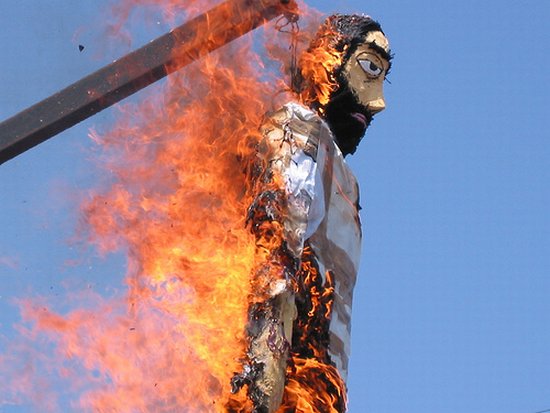Easter Traditions Across Europe

Almost everyone knows about the Easter rabbit and not forgetting to gorge oneself on chocolate Easter eggs. But where do these traditions come from and is it the same everywhere? We’ve taken a look at some of the fun and unusual historical Easter traditions across Europe celebrated from Northern to central, Eastern and Southern Europe. Have a read!
-
Sweden & Finland – The Easter witches
As if Halloween had come around for a second time, in Sweden and some regions of Finland, during Easter, little girls dress up in rags and dirty clothes and go around the town collecting sweets in copper kettles from all the neighbours. The tradition of masquerading as witches stems from an old Pagan belief that witches would fly to a German mountain on the Thursday before Easter to cavort with Satan. Upon their return, Swedes would light fires in order to frighten them off. This tradition is still honoured today with bonfires and fireworks leading up to Easter Sunday.
-
United Kingdom & Germany – The Easter bunny/hare
We celebrate the appearance of the Easter bunny every Easter, but why? It’s not because we love this fluffy and cute animal (although we do!), but because of an ancient Anglo-Saxon festival of “Eostre”, the Spring goddess whose main symbol was a rabbit. As well as reminding us of Spring, the rabbit is also a symbol of fertility and reminder of the German settlers who took their folktales of the egg-laying bunny, the “Osterhase”, to Pennsylvania, America during the 1700s.
-
United Kingdom – Hot cross buns
A typical British tradition celebrated across the UK and Ireland is to eat sweet spiced buns that contain currants and raisins on Good Friday. Apart from being quite delicious, the notable characteristic of this bun which gives it its name is the white cross on top of each, used to serve as a remembrance of the suffering of Christ. Although most often eaten plain; some people opt to add a little butter for taste.
-
Central & Eastern Europe – Decorating eggs
The tradition of decorating eggs for Easter is popular amongst Albanians, Armenians, Belarusians, Croats, Czechs, Georgians, Germans, Hungarians, Latvians, Lithuanians, Macedonians, Poles, Romanians, Russians, Serbs, Slovaks, Slovenes and Ukrainians.
Special delicacies are also prepared in baskets, such as “white sausage” and “mazurek” (a sweet pastry) in Poland, “Kozunak” (sweet bread) in Bulgaria, and “Potica” (nut cake) in Bosnia and Herzegovina, Croatia and Slovenia. There is clearly more to Easter than just chocolate and rabbits!
-
The Netherlands, Belgium and France
Churches in these three neighbouring countries will keep their church bells silent in the days leading up to Easter as a sign of mourning. This is part of an Easter tradition which says that the silent bells fly out of their steeples to travel to Rome, returning on Easter morning, bearing gifts of coloured eggs and hollow chocolate molded into eggs or rabbits. In northern and eastern parts of the Netherlands, Easter fires are lit on Easter day at sunset.
-
Spain – La Semana Santa
Easter, or “La Semana Santa” which translates as “Holy week” in English is very important in Spain, which attempts to keep Easter a strictly religious holiday. In the southern region of Andalusia (particularly in Málaga and Seville), the festival is most notable, so much so that many people from all over the world travel especially to see the events and festivities held there. Typically, this week consists of various types of sombre processions by brotherhoods and fraternities. These groups walk through the towns dressed in the rather sinister looking Nazareno, a penitential robe, and carry floats and sculptures that depict the scenes as relayed by the gospels in the bible.
-
Greece (& Latin America) – The Burning of the Judas
In some parts of Greece as well as more commonly throughout several Latin American countries, the Easter tradition is to erect and later burn or explode an effigy of the traitorous disciple. Unlike the nicer and sweeter traditions of the rest of Europe, this tradition is quite a violent and cathartic celebration of a biblical event. In more recent years, the Judas figure has been replaced with corrupt politicians or businessman as a way of protest.
Do you celebrate any of these traditions or have your own personal traditions? Let us know in the comment section below!
And wherever you are, enjoy the Easter celebrations!















4 Comments
Ooh this is really interesting! I love the idea of Easter witches!
In Finland we also decorate eggs. We have also courses how to paint them:
Orthodox icons and Easter eggs.
Have a great day!
We have the hot cross buns.
in Poland we have quite funny tradition “Śmigus-Dyngus” which is kind of water fight on Monday Easter 🙂